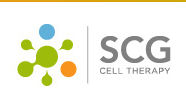Request Demo
Last update 08 May 2025
HBsAg x CD28
Last update 08 May 2025
Related
1
Drugs associated with HBsAg x CD28Target |
Mechanism CD28 inhibitors [+1] |
Active Org.- |
Originator Org. |
Active Indication- |
Inactive Indication |
Drug Highest PhaseDiscontinued |
First Approval Ctry. / Loc.- |
First Approval Date20 Jan 1800 |
100 Clinical Results associated with HBsAg x CD28
Login to view more data
100 Translational Medicine associated with HBsAg x CD28
Login to view more data
0 Patents (Medical) associated with HBsAg x CD28
Login to view more data
9
Literatures (Medical) associated with HBsAg x CD2801 Nov 2023·Annals of clinical and laboratory science
Exhaustion of CD8+ T Cells in HBV Infection: Searching for Serological Markers.
Article
Author: Peng, Lishan ; Liu, Xian ; Feng, Jinpeng
01 Aug 2020·Scandinavian Journal of ImmunologyQ4 · MEDICINE
Effects of intrauterine exposure to maternal‐derived HBeAg on T cell immunity in cord blood
Q4 · MEDICINE
Article
Author: Ma, Yanchen ; Li, Yongyin ; Liao, Dandan ; Gao, Yunfei ; Huang, Meiting ; Tang, Bo ; Liu, Zhihua ; Li, Jinna ; Yin, Xueru
01 Aug 2014·Experimental and clinical transplantation : official journal of the Middle East Society for Organ TransplantationQ4 · MEDICINE
Relation between costimulatory molecule polymorphism and hepatitis B infections in hematopoietic stem cell transplant recipients.
Q4 · MEDICINE
Article
Author: Karimi, Mohammad Hossein ; Saadi, Mahdiyar Iravani ; Geramizadeh, Bita ; Ramzi, Mani ; Yaghobi, Ramin ; Zakerinia, Maryam
Analysis
Perform a panoramic analysis of this field.
login
or

AI Agents Built for Biopharma Breakthroughs
Accelerate discovery. Empower decisions. Transform outcomes.
Get started for free today!
Accelerate Strategic R&D decision making with Synapse, PatSnap’s AI-powered Connected Innovation Intelligence Platform Built for Life Sciences Professionals.
Start your data trial now!
Synapse data is also accessible to external entities via APIs or data packages. Empower better decisions with the latest in pharmaceutical intelligence.
Bio
Bio Sequences Search & Analysis
Sign up for free
Chemical
Chemical Structures Search & Analysis
Sign up for free
